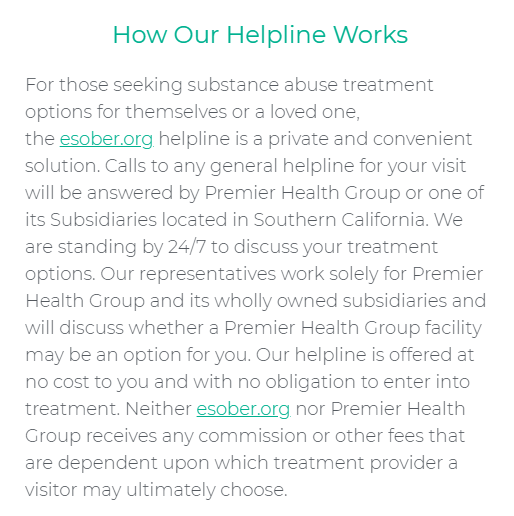When it comes to dealing with severe pain, a prescription painkiller like Tramadol is often a good choice for easing any physical agony one may be feeling. But just like many analgesic medications, Tramadol works similarly to opioids in a way that it also has a high risk of developing dependency. Even though Tramadol is less addictive, the high it brings often creates plenty of room for people to abuse it. A sign of abuse is when one start snorting tramadol.
If you’re struggling with severe pain and are considering taking Tramadol, make sure you talk to your doctor first. They can help you weigh the risks and benefits of taking this medication and recommend other options if they feel Tramadol isn’t the best choice for you.
Can You Snort Tramadol?
Snorting tramadol can be dangerous and is not recommended. Tramadol is a prescription opioid pain reliever that should only be taken as directed by a doctor. Snorting tramadol can lead to serious health risks, including addiction and overdose.
When taken orally, tramadol is absorbed slowly by the digestive system and distributed throughout the body. When snorted, however, the drug enters the bloodstream much more quickly, increasing the risk of adverse side effects. Additionally, because snorting drugs bypasses many of the body’s natural defenses – such as saliva and stomach acids – there is an increased risk of overdose when using this method of administration.
What is Tramadol?
Tramadol is a prescription medication used to treat moderate to severe pain and is often known for its brand names Ultram, Ultram ER, ConZip, and Ryzolt. It is a synthetic opioid analgesic, and it works by binding to the mu-opioid receptors in the brain and spinal cord. This blocks the transmission of pain signals from the nerves to the brain.
Tramadol comes in tablet and capsule form and is usually taken orally but can also be given intravenously or intramuscularly. It is essential that Tramadol is taken exactly as prescribed by your doctor and that you do not take more than prescribed, as this can lead to addiction or overdose.
How Does Tramadol Work?
Tramadol is a pain reliever that works by blocking the signals of pain between the nerves and the brain. It also has a sedative effect, which can help to relieve anxiety and promote sleep. Tramadol is a medication that is used to help manage pain. It is considered less addictive than other pain medications, and as a result, it is classified as a Schedule IV substance under the Controlled Substances Act.
Tramadol is a drug often abused for its calming and euphoric effects. People who abuse Tramadol usually feel relaxed and happy. However, people who take higher doses of the drug (especially those with severe pain) are at risk for serious side effects, including seizures and respiratory depression.
What Happens When You Snort Tramadol?
In the short-term, tramadol can cause a rush of pleasure and euphoria. It can also increase heart rate and blood pressure. Long-term use of tramadol can lead to dependence and addiction. Some common side effects associated with snorting tramadol include the following:
- Abdominal cramping and pain;
- Agitation;
- Depression;
- Headache;
- Cognitive problems;
- Skin itch;
- Nausea;
- Sweating;
- Increased excitability;
- Sleepiness, fatigue, or inability to stay awake;
- Hot or cold flashes;
- Depressed breathing;
- Changes in blood pressure;
- Changes in heart rate;

What are the Dangers of Snorting Tramadol?
When someone crushes and snorts a medication, they are essentially increasing the risk for overdose and death. This is because the person bypasses the digestive system, which means the medication can enter the bloodstream and reach the brain much faster.
This can be especially dangerous if the person does not know how much medication they are taking, as they could easily take too much and overdose. Snorting medication can also lead to addiction, as the person is likely to return for more of the drug to get the same high. Other side effects include the following:
- Drowsiness;
- Difficulty staying asleep or falling asleep;
- Headaches;
- Anxiety;
- Uncontrollable shaking of a body part;
- Tight muscles;
- Mood swings;
- Heartburn/indigestion;
- Dry mouth;
- Hives, rash, blisters;
- Difficulty swallowing or breathing;
- Hoarse voice;
- Nausea, vomiting, lack of appetite;
- Dizziness;
- Changes in the heartbeat;
- Loss of sexual desire;
- Seizures;
- Loss of consciousness;
Taking tramadol makes it crucial to be aware that it can slow or stop your breathing. If you experience slow breathing with long pauses, blue-colored lips, or if you are hard to wake up, it is essential to seek emergency medical attention.
What are the Symptoms of Tramadol Overdose?
The symptoms of tramadol overdose can vary depending on how much of the drug was taken and whether it was taken with other substances. However, some common symptoms of tramadol overdose include:
- Seizures;
- Slow heart rate;
- Dizziness;
- Nausea;
- Vomiting;
- Blurred vision;
- Extreme drowsiness;
- Loss of consciousness;
If you or someone you know has overdosed on tramadol, it is important to seek medical help immediately, as it can be a life-threatening situation.
What are the Tell-Tale Signs of Tramadol Misuse/Addiction?
If you are worried that someone you know may be abusing tramadol, there are some tell-tale signs to look out for. Tramadol addiction can manifest itself in several ways, and it can be challenging to spot the signs if you don’t know what to look for.
Some of the most common signs of tramadol misuse or addiction include:
1. Taking more tramadol than prescribed or using it for purposes other than those prescribed by a doctor.
2. Developing a tolerance to the drug and needing increasingly larger doses to achieve the desired effects.
3. Experiencing withdrawal symptoms when not taking tramadol or reducing dosage levels. Withdrawal symptoms can include nausea, vomiting, diarrhea, anxiety, agitation, tremors, and seizures.
4. Engaging in risky behaviors while under the influence of tramadol.
5. Spending increasing amounts of time obtaining and using tramadol, often at the expense of other activities or responsibilities.
Tramadol abusers may exhibit changes in mood or behavior, including becoming more aggressive or agitated, having problems with concentration or memory, and becoming isolated from friends and family.
In addition to the potential psychological effects of tramadol abuse, several physical risks are involved. Tramadol abuse can lead to tolerance and dependence, both of which increase the risk of overdose. Abusers who combine tramadol with other drugs or alcohol are at an even higher risk for overdose. Symptoms of an overdose include extreme drowsiness, shallow breathing, slow heart rate, coma, and death.
Tramadol Abuse and Serotonin Syndrome: A Disastrous Pair that Leads to Dependency on the Drug
Serotonin syndrome is a potentially life-threatening condition that can occur following the use of certain medications. The condition is caused by an excess of serotonin, a neurotransmitter that plays a vital role in mood and movement. When too much serotonin is present in the body, it can lead to a wide range of symptoms, including muscle twitching, confusion, agitation, high blood pressure, hallucinations, delusions, seizures, loss of motor coordination, and fever.
Tramadol is a medication that can cause serotonin syndrome when used in combination with other medications that increase serotonin levels. Tramadol is an opioid pain reliever often prescribed for moderate to severe pain. It works by blocking pain signals sent to the brain and increasing serotonin levels. Serotonin syndrome caused by tramadol can be very serious and may require hospitalization.
If you are taking tramadol and another medication that increases serotonin levels, be aware of the signs and symptoms of serotonin syndrome and seek medical attention if you experience any of them.
Conclusion
Tramadol is a powerful opioid medication that can be extremely effective in treating moderate to severe pain. However, it is important to take tramadol properly and be aware of the signs of potential abuse, as misuse can lead to serious health complications.
It is crucial that tramadol be taken only as prescribed by a doctor. Taking too much tramadol can cause respiratory depression, seizures, and even death. Additionally, taking tramadol with other medications or alcohol can increase the risk of adverse effects. If you suspect someone you know is abusing tramadol, please seek help immediately.
Source:




